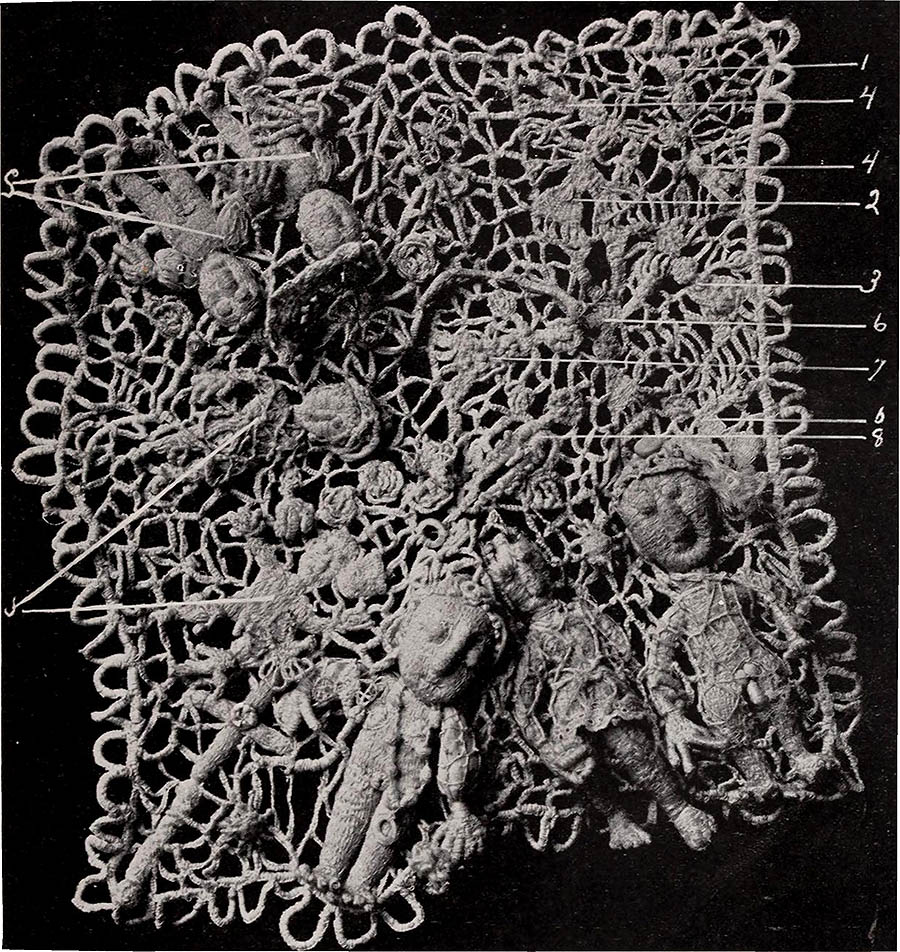The history of lace-making is most interesting. 1

*
Plate I. (front view; cropped from border; levels 0 1.00 240; sharpened one step)
1. St. Joseph and St. Michael. 2. Little Nannie Red Nose and Little Boy Blue. 3. Lucy. Crazy Jane. 4. The Children of the Abbey. 5. Virgin Mary. 6. Mr. Gibson. 7. The Woman Picking up Apples. 8. Skeleton. J. J Jack and Jill. S S. Mr. and Mrs. Hub Smith.
ex Arrah B. Evarts (1878-1968). “A Lace Creation Revealing an Incest Fantasy.” Psychoanalytic Review. Vol. V. (1918) : 364-380
The College of Physicians of Philadelphia Historical Medical Library copy, no date of digitization
epigram ex p 364
The same plates are reproduced (as Figures 67-A and 67-B) in Edward John Kempf (1885-1971 *), his Psychopathology (1920), which is where I first encountered them. The context is Kempf’s Chapter XIII, “Psychopathology of chronic, pernicious dissociation of the personality with hebephrenic adaptations—predominance of excretory erotic interests.” Hebephrenia would now be termed disorganized schizophrenia.
Kempf makes no reference to the plates, nor to Evarts, beyond this caption —
“Crochet work of patient having a preadolescent incestuous attachment. Through creating such fantasies of herself with her parents and surroundings she restores images of past experiences which aroused and gratified the affect. Dr. Arrah B. Evarts reported this creation in The Psychoanalytic Review, Vol. V, No. 4, showing the significance and affective value of the figures and details.“
p 694
—
Kempf would have worked with Evarts at St. Elizabeths Hospital in Washington, D.C.
tags:
Adelaide V. Hall; lace; The Woman Picking up Apples; A. B. Evarts; E. J. Kempf